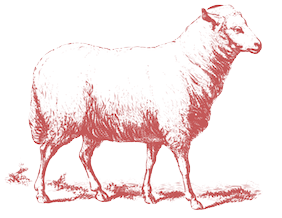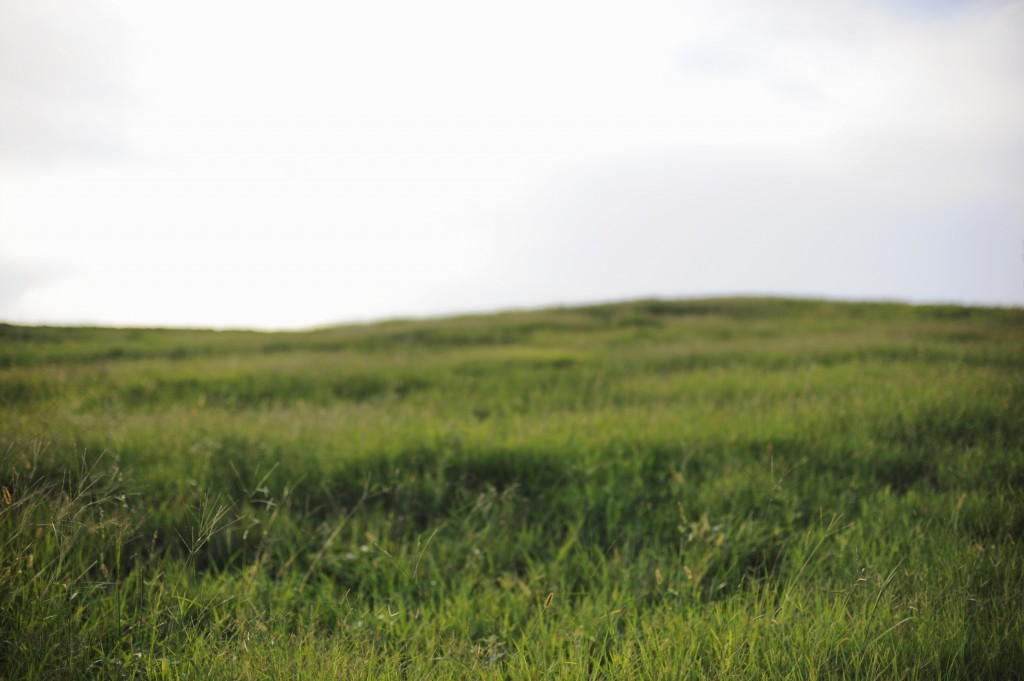Well, I've been sick for the past week. Flat-out-bed-rest-can't-move-drugged-up sick. It's the complete opposite of what my life has been like since we started making cheese. I've gone from day-in-day-out 10–12 hour days, juggling everywhich thing to a full, solid week of being unable to do anything at all. Full stop. The upshot is that I've been doing a lot of thinking in my convalescence. The seasons have started to shift, which is our usual cue to begin a more reflective, less active time of year. I've been cooking up projects and hammering out ideas for how things can move more smoothly next season.
I've been thinking a lot about the grass. I recently found myself saying to someone that the grass is the indicator for all other aspects of the health of the farm. I believe this to be true. Our grass needs to be better. We have some spots where the sward is thin, where weeds are too many. Drought didn't help us. We ran out of grass just as the drought and high temperatures peaked in July, which was a bit of a shock after two years of not being able to keep up with the grass! Worms were terrible, a sign that the grass was poor this year—too short, not enough nutrition—we found ourselves grateful that we were able to supplement the ewes with hay and feed in the parlor. The ram lambs grew terribly and succumbed to worms constantly, despite our vigilant deworming program. It was as if the moment the dewormer left their system, the worms blossomed and the poor animals had nothing to fight back with. All these problems point back to the grass. Good grass means good nutrition, which means the animals can fight worm infections much, much better. Good grass means taller grass, since the worms can't climb the stem if it is longer than 8 inches. Good grass means high organic matter, which means better drought tolerance. But why did we not have these things? Listening to the Joel Salatins and Dennis Stoltzfooses of the world converted me to the gospel of grass: grass solves all feed problems on the farm. Rotational grazing is the paramount solution! And it is. But what I'm begining to see is that for the grass farming to do all its cracked-up to do, you have to get there first.
I had a bitter moment this summer when we ran out of grass and I had so many animals struggling. As I wrote the check for the hay I had to buy to keep my animals alive, I couldn't help but feel that I had been sold a bill of goods by the grassfarming movement. Why wasn't this working? We rotate daily using a moderate stocking density, we use chickens in our rotation... what was going on? Yes, we started grazing a bit early this Spring and should have waited until the sward had really taken hold. Maybe we could use a new fencing regimin to graze faster and at a higher destiny. But there was something else bothering me.
The answer came to me as I walked up and down the fields, looking down at the dry July grass, treading over the rise and fall of the terraces, formed to grow cotton, the last bush of which was still growing here less than 100 years ago. With a great wave of sadness, it occurred to me "that's where the fertility is." Gone to make cloth. Every last bit of it exported from the spot where I was standing lost in the great chain of commerce. I wanted to cry out at my forebears, "How dare you! How dare you leave me in this situation! Do you not know how hard it is to farm? How dare you make it even harder on those who are here now!" To understand my outrage, one first has to understand something about fertility.
Fertility is an abstract concept, but is firmly grounded in biological reality. In biology, the ability to reproduce is the pinnacle of life: if a life form has enough to not only continue on living itself, but to thrive, it can reproduce. This is, in a nutshell, fertility. Literally it means "to bear," as in to hold or carry. It is the ability of a living thing to carry on life: the carrying capacity for life. If there is not enough of the stuff a life form needs to go on living, then it dies or fails to reproduce. This is the absence of fertility. The fertility of a piece of land is related directly to the quantity of life it can bear. The quantity of life the land can sustain without input is directly related to the quantity of organic matter, that is poop (and other decaying things). Decay is the primary attractor for life. Microbes, bacteria, and fungi love organic matter and are essential to the propagation of plants growing in it. Microbes create and release nutrients in the soil so that plants can access them. Enough organic matter, especially if it is held together with lots of roots, and the soil acts as a sponge, holding in water. Not enough organic matter and you have hardpan: water trickles off the soil; roots can't take hold in it. Fertility can be directly measured by the quantity of organic matter in soil.
Getting fertility is a bit of a problem, because if you have more fertility, it's easier to get more. If you don't have much, it's hard to get. Think of it like an endowment at a school or big institution. The more money in the endowment, the more money the endowment can generate to create useful programs and provide scholarships. Then, more people are positively affected by the institution to give donations and grow the endowment. If a school has a small endowment, it is very hard to operate: hard to give scholarships, hard to attract the best teachers, and hard to ask people for more money. A school with a large endowment has a lot of fiscal fertility: it has more, so it can make and do more.
Here is the most important feature of an endowment: the school never spends the endowment itself, only the interest it throws off. Fertility in the land is no different. The land can be like a huge bank, holding fertility within it. If you have enough fertility, the land will throw off a kind of "interest" in the form of enough nutrition and water to support more life than what is needed in that specific place. This is the opportunity human beings seized upon with the advent of agriculture: the ability of a fertile piece of land to support more than could live on that one spot. We realized that we can work with nature to provide an endowment that better ensures our survival. But like its financial counterpart, fertility has to be properly managed if it is to remain effective. And so the words of Wendell Berry flooded my mind as I looked at the rolling terraces, seeing cotton where grass is now, harvested and exported, harvested and exported, fertility never to return:
Invest in the millennium.
Plant sequoias.
Say that your main crop is the forest that you did not plant,
that you will not live to harvest.Say that the leaves are harvested when they have rotted into the mold.
Call that profit. Prophesy such returns.
Put your faith in the two inches of humus that will build under the trees
every thousand years.
Listen to carrion--put your ear close,
and hear the faint chattering of the songs that are to come.
These words suggest the antidote to the spendthrift farming we have practiced now for generations. Most farms operate on a minimum of fertility. Grass is very poor because the fertility has been extracted by generations previous, so fertilizers are brought in along with hay or other feedstuffs to keep the animals alive. Most farms don't rotate, so whatever organic matter the stock leaves behind does not have time to set in before the cow, sheep, or goat comes back to take out more. Then the animal is sold off, typically to a feedlot where it is fed more fertility from elsewhere, then sold off again as meat to faraway places. It's as if one deposited money in an investment, but then kept coming back to take more money out before the investment matures.
No one in their right mind would expect good growth with such behavior. It's divestment in place of investment. It's bad business. The notion that what you can take out is directly related to what you put in is rendered irrelevant. Basic economics be damned to the false values of endless consumption. Farms have become pass-throughs for fertility, like some security exchanged and traded on Wall Street (which, by the by, is not for nothing called the stock market!). Instead they ought to be a place where fertility can be deposited and held and allowed to accumulate. I understand now why I have had to buy hay, why the grass is poor in places, and why my animals suffer from disease. I understand that I have to mitigate and provide crutches when trying to use a system that relies on fertility I don't have as much as it replenishes it. Because of what my forbears took away, I have to add inputs in order to get it back. I have to put in some of what they took out if I am to expect any kind of return on my investment in this land and in these animals. It's not something I fully accounted for emotionally, financially, or otherwise. But that said, it is my goal and the goal of our farm to leave the land better than when we got it.

